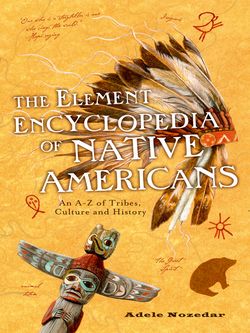Читать книгу The Element Encyclopedia of Native Americans: An A to Z of Tribes, Culture, and History - Adele Nozedar - Страница 75
BUFFALO BILL
Оглавление“Every Indian outbreak that I have ever known has resulted from broken promises and broken treaties by the Government.”
1846–1917
William Frederick Cody was born in Iowa and lived with his family, who were of Quaker stock, in Canada for many years before they moved to Kansas.
His distinctive nickname—which became synonymous with the idea of the Wild West—was actually won by him in a shooting match with another Bill, Bill Comstock. Both were buffalo hunters and killers. Cody won the name after shooting 69 buffalo, 19 more than Comstock, in a timed shoot-out.
Cody had secured a contract to supply buffalo meat to the men working on the Kansas Pacific Railroad. Evidently a prolific hunter, Cody killed over 4,000 buffalo in an 18-month period between 1867 and late 1868, and no doubt was among those who made a significant contribution to the almost-extinct status that the species subsequently suffered. In later life, understanding what was happening, Cody would campaign for a restricted hunting season.
Bill had a wide-ranging resumé. During his life, he claimed, he had been a soldier, a scout, a Pony Express rider, a trapper, a stagecoach driver, a wagon master, and the manager of a hotel. He was also a distinguished Freemason. He won the Medal of Honor, awarded for gallantry in action.
However, it was his Wild West shows that really made him famous, not only in the U.S. but throughout Europe.
“Buffalo Bill’s Wild West Show” was conceived after Cody had spent ten years as an actor in a traveling show entitled “Scouts of the Plains,” in which episodes from the lives of the settlers and the Natives were portrayed. Founded in 1883, Cody’s show changed its title ten years later to “Buffalo Bill’s Wild West and Congress of Rough Riders of the World.” From all accounts, this must have been a spectacularly staged event, a circuslike entertainment that included among its participants members of the U.S. Military, many, many horses, displays of sharp-shooting using real guns, and also real live Native Americans, dressed in full attire. Sitting Bull and Crazy Horse were among those who took part.
The show traveled all over the U.S. and overseas in Europe (where it toured eight times), including Great Britain. The show played to Queen Victoria in 1887, the year of her Jubilee marking 50 years on the throne. In 1890 Buffalo Bill had an audience with Pope Leo XIII.
Buffalo Bill, who had been a scout, had a huge amount of respect for the Native Americans and their plight. He believed that his show paid the Native American participants a good wage. When the show traveled, the Native American contingent would pitch their camps along the route and at each stopping-place where the show was going to be held. This not only added to the spectacle but showed the audiences a little of the Native American way of life.
Buffalo Bill died peacefully in 1917 of kidney failure, surrounded by his family and friends.
